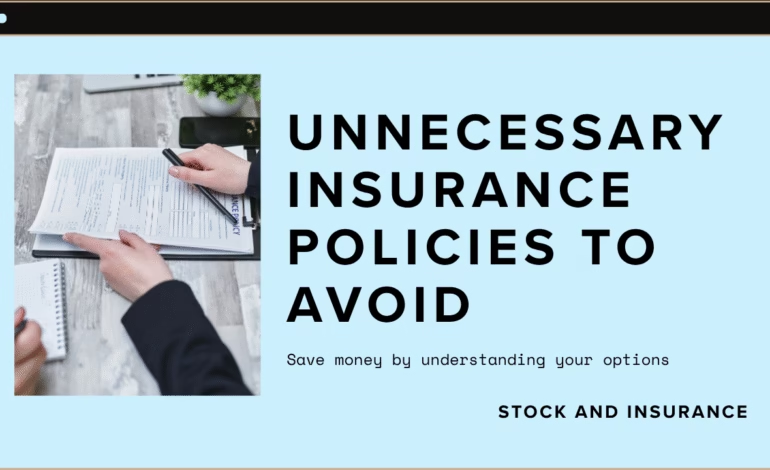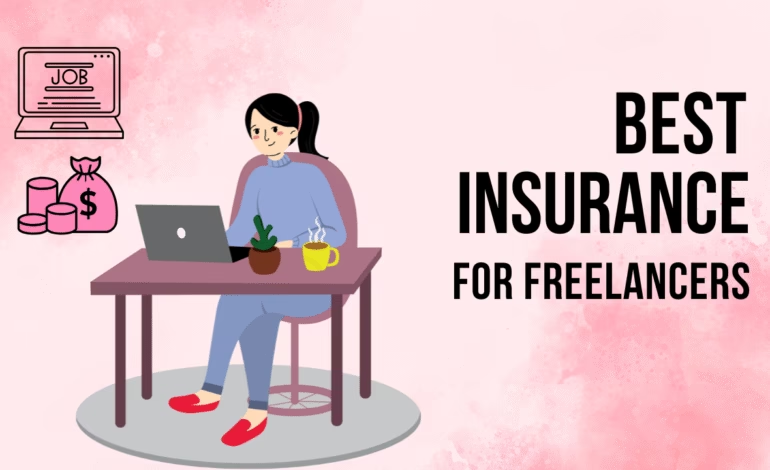
If you are a freelancer, you already know the trade-off that comes with independence. You have the freedom to choose your clients, your working hours, and even your income potential. But you also face one big challenge that most 9 to 5 employees never think about: the lack of a safety net. No employer-sponsored benefits. No automatic health plan. And definitely no company paid life insurance policy.
So, what happens if something unexpected occurs tomorrow? Who will pay your bills, cover your family’s expenses, or take care of outstanding debts? That is exactly where life insurance for freelancers becomes more than just an optional idea. It becomes essential financial protection.
By 2026, the freelance economy is projected to grow by over 30 percent globally, with the United States, Canada, the United Kingdom, Singapore, and Australia leading the charge. Yet, despite this boom, over 70 percent of freelancers are uninsured or underinsured. This guide aims to fix that.
In this comprehensive blog, we will break down everything you need to know about insurance options for freelancers, the best life insurance for freelancers in 2026, how to find affordable life insurance for freelancers, and how to make sure you are not paying more than you should.
Why Freelancers Need Life Insurance
Think about this for a moment. When you are self-employed, your income stops the day you stop working. Unlike traditional employees who might have employer-paid group life insurance, freelancers must build their own safety nets.
Here are the real reasons why life insurance is crucial for freelancers:
- Income Protection
Your clients do not pay sick leave or death benefits. A life insurance policy replaces lost income and ensures your family can maintain their lifestyle if something happens to you. - Debt Coverage
Many freelancers take business loans, credit lines, or equipment financing. Life insurance ensures those debts do not fall on your family’s shoulders. - Future Security for Family
Whether you are a single parent, married, or supporting dependents, life insurance secures the financial future of those who rely on your income. - Business Continuity
For freelancers who run small agencies or creative businesses, insurance helps partners or family members manage ongoing work and settle outstanding contracts.
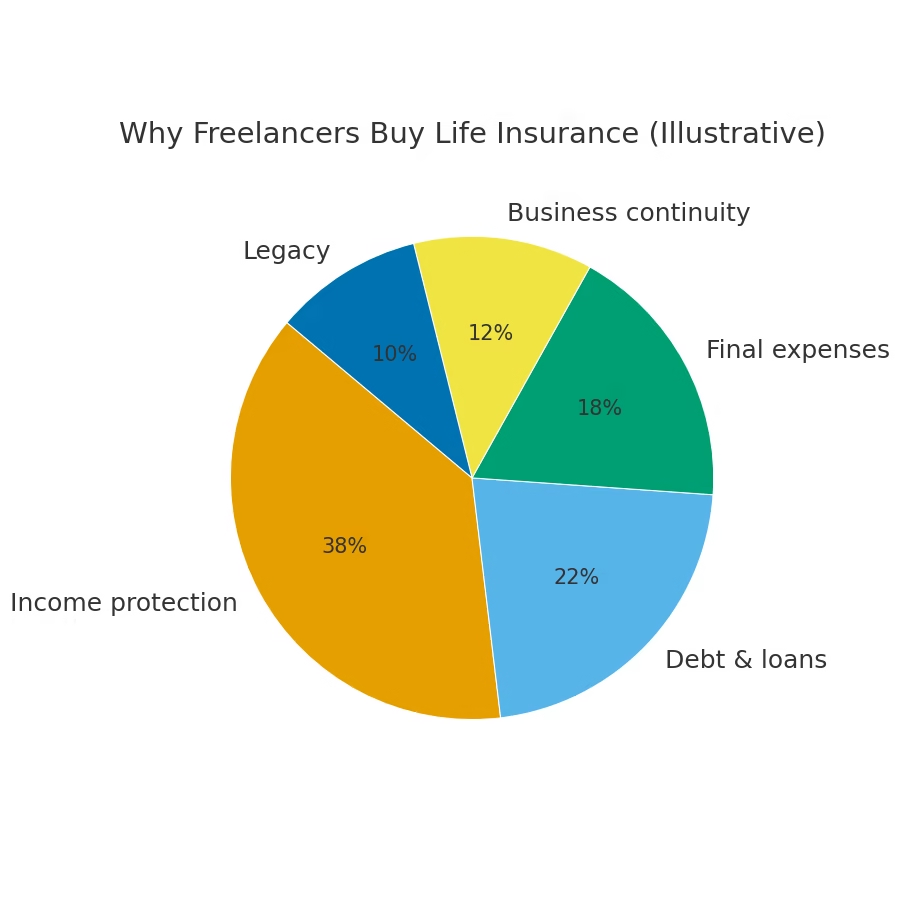
Common Myths About Freelancers and Life Insurance
Even seasoned professionals often believe myths that prevent them from getting covered. Let’s clear them up.
Myth 1: Life insurance is too expensive for freelancers.
Reality: You can find affordable life insurance for freelancers starting at less than $20 per month for basic term coverage.
Myth 2: You don’t need insurance if you are single.
Reality: Even singles have financial responsibilities. A policy can cover personal loans, taxes, or final expenses.
Myth 3: Health issues make you ineligible.
Reality: There are now multiple flexible plans in 2026 that offer coverage for freelancers with pre-existing conditions or irregular income.
Myth 4: Freelancers cannot qualify for the same benefits as employees.
Reality: You absolutely can. Many insurance providers now offer specialized freelance and gig economy packages designed to be flexible and affordable.
Understanding the Types of Life Insurance for Freelancers
Before you rush to get insured, you must understand your options. Different plans work better for different freelancers depending on your income, lifestyle, and family needs.
1. Term Life Insurance
This is the most affordable life insurance for freelancers. It provides coverage for a fixed term, usually between 10 and 30 years. If you pass away during that time, your beneficiaries receive the payout.
Best For: Freelancers in their 20s to 40s who want high coverage at low cost.
Example: If you are a freelance web designer earning $60,000 annually, a 20-year term policy worth $500,000 might cost you just $25 a month.
2. Whole Life Insurance
This type provides lifetime coverage and builds cash value over time. It is more expensive but doubles as an investment tool.
Best For: Established freelancers who want stability and potential cash growth.
Example: A Canadian freelance photographer could take a $200,000 whole life policy and use the cash value later for business investment or retirement planning.
3. Universal Life Insurance
A flexible plan where you can adjust premiums or coverage based on your freelance income fluctuations.
Best For: Freelancers with varying monthly income such as writers, consultants, and digital marketers.
4. Indexed Universal Life Insurance
This combines flexibility with investment potential. Your returns are tied to market performance, such as the S&P 500 index, without the risk of direct stock investment.
Best For: Experienced freelancers looking to balance insurance protection with long-term wealth growth.
5. Group Freelance Insurance Plans
In 2026, many professional associations and freelance communities are offering group insurance options for freelancers. These come at lower rates and with less paperwork.
Example: A freelance network in Australia now offers a group life insurance plan with optional health coverage and premium discounts for creative professionals.
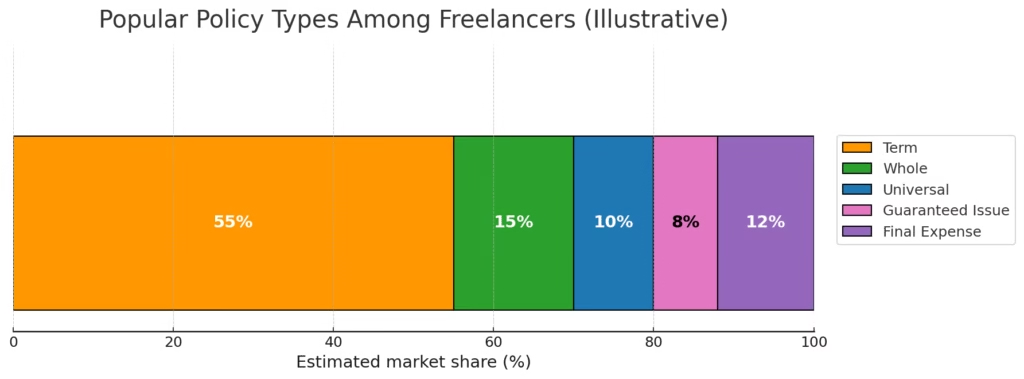
How Much Coverage Do Freelancers Need?
A simple rule of thumb is to multiply your annual income by 10 to 15. However, freelancers should also factor in variables like:
- Outstanding debts and loans
- Ongoing family expenses
- Future goals (education funds, property, retirement)
- Business liabilities
Example Calculation:
If your annual income is $70,000, your estimated coverage should be around $700,000 to $1,000,000.
Want a quick self-check? Ask yourself this:
If I stopped earning tomorrow, how many years could my family continue without financial stress?
If your answer is less than three years, you probably need stronger coverage.
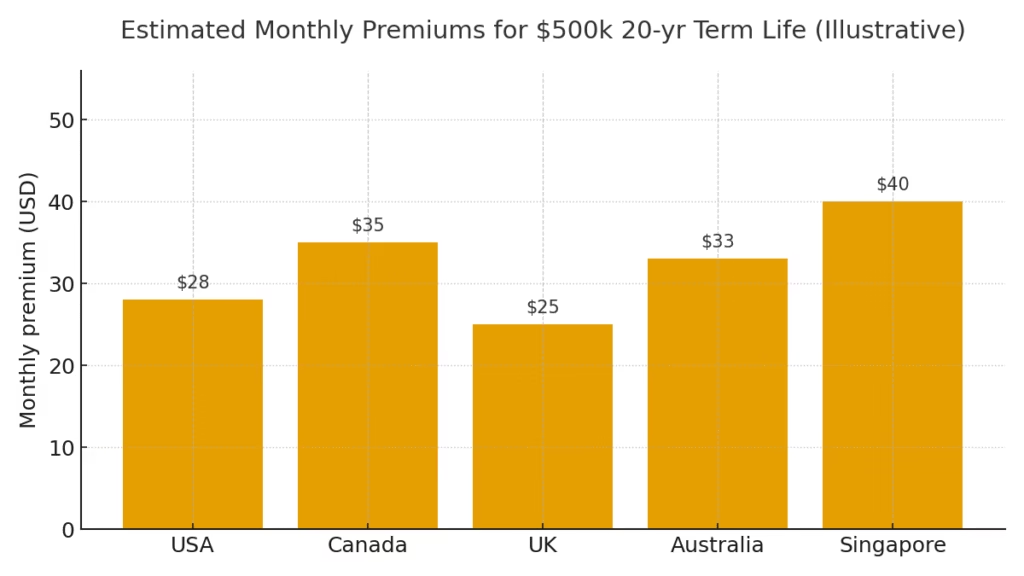
Comparing Life Insurance Providers for Freelancers in 2026
Insurance companies are now tailoring products for the gig economy. Here’s a quick overview of what to expect in 2026 across major countries:
| Country | Average Monthly Premium (Term Policy, $500,000 Coverage) | Notable Providers |
|---|---|---|
| USA | $22 – $35 | Haven Life, Ethos, Ladder, Policygenius |
| Canada | $25 – $40 | Sun Life, Manulife, PolicyAdvisor |
| UK | £20 – £30 | Aviva, Legal & General, Vitality |
| Australia | AUD 30 – 45 | TAL Life, MLC, AIA |
| Singapore | SGD 30 – 50 | Prudential, Singlife, Etiqa |
Each provider offers unique features like instant approval, flexible premium adjustments, and even digital policy management tools.
A Freelancer’s Story
Meet Angel, a freelance content strategist from London. When she turned 32, she realized she was the only source of income for her family. After researching insurance options for freelancers, she chose a 25-year term life policy worth £400,000 for just £28 a month. Two years later, when her business income increased, she added a rider for critical illness protection.
Angel’s decision ensured her family’s financial stability and gave her peace of mind. Her story is a perfect example of how small monthly payments can provide massive security for freelancers in 2026 and beyond.
Top-Rated Life Insurance Plans for Freelancers in 2026
Finding the best life insurance for freelancers in 2026 depends on three key things: coverage flexibility, affordability, and ease of management. Freelancers value simplicity, so policies that offer digital control, instant approval, and flexible payment options are the real winners this year.
Here are some of the most recommended plans based on market research and reviews from financial experts in the US, UK, Canada, Singapore, and Australia.
1. Haven Life (United States)
Highlights:
- Term life coverage up to $3 million
- Fully online application and instant decision
- Backed by MassMutual
Why Freelancers Love It:
It is affordable, quick to apply for, and perfect for freelancers who need coverage without the hassle of medical exams.
2. PolicyMe (Canada)
Highlights:
- Transparent pricing with instant quotes
- Built-in digital management
- Couples can apply together for discounts
Why It Stands Out:
Freelancers in Canada prefer PolicyMe for its easy interface and competitive pricing. It is especially popular among young freelancers and digital creators.
3. Aviva (United Kingdom)
Highlights:
- Flexible coverage with add-ons like critical illness and income protection
- Family-friendly plans
- Trusted by over 30 million customers worldwide
Why Freelancers Choose It:
It offers stability and reliability, with customization options for freelancers who plan to expand their business or start a family.
4. Singlife (Singapore)
Highlights:
- Digital-first insurance provider
- Adjustable coverage to match freelance income changes
- Offers bundled health and accident coverage
Why It Works for Freelancers:
Singapore-based freelancers appreciate Singlife’s flexibility and fast claim process. The app-based management makes policy tracking simple.
5. TAL Life (Australia)
Highlights:
- Term and whole life plans available
- Income protection for freelancers with irregular cash flow
- Add-ons for trauma and total disability
Why It’s Popular:
Freelancers in Australia prefer TAL Life because it covers both personal and business-related risks, offering comprehensive protection.
How to Choose the Right Life Insurance Plan as a Freelancer
Choosing the right life insurance for freelancers can feel like a challenge, especially if you have variable income. But it gets simple when you break it down into steps.
Step 1: Assess Your Financial Needs
Ask yourself these questions:
- How much does my family need to live comfortably for the next 10 to 15 years?
- Do I have debts or business liabilities?
- What are my future goals like home purchase, education, or retirement?
Example:
If you earn $80,000 per year and expect your family to maintain their lifestyle for at least 10 years, aim for $800,000 to $1 million in coverage.
Step 2: Understand Your Risk Profile
Freelancers who work in physical jobs (like photographers or event planners) may face higher risk compared to digital freelancers. This may slightly affect your premium. Always disclose accurate job details to avoid claim rejection later.
Step 3: Compare Policy Terms
Look for these essentials when comparing plans:
- Coverage duration
- Premium payment options (monthly, quarterly, or annually)
- Availability of riders (for disability or illness)
- Renewal flexibility after term expiry
Step 4: Check the Provider’s Financial Strength
Before finalizing your plan, check the insurer’s credit rating and claim settlement ratio. Websites like AM Best and Moody’s provide updated financial strength ratings for top global insurers.
Step 5: Read Reviews and Customer Feedback
Always check reviews from real freelancers. You can explore user testimonials on platforms like NerdWallet, Policygenius, or Finder to get unbiased insights about insurer reliability and claim settlement experience.
Term Life vs Whole Life Insurance for Freelancers
A common question many freelancers ask in the comments section is:
“Should I choose term life or whole life insurance if my income fluctuates?”
Here is the simplest way to decide:
| Feature | Term Life | Whole Life |
|---|---|---|
| Duration | Fixed (10 to 30 years) | Lifetime |
| Cost | Low | High |
| Cash Value | No | Yes |
| Flexibility | Moderate | High |
| Ideal For | Budget-conscious freelancers | Long-term planners and investors |
Example:
If you are a 28-year-old freelance web developer earning $50,000 annually, a term policy worth $500,000 may cost just $20 to $25 monthly. But if you prefer a lifelong plan with savings potential, a whole life plan for the same coverage may cost around $120 monthly.
Smart Ways to Lower Your Life Insurance Premiums
Freelancers often worry about affordability. But the good news is, there are several smart strategies to reduce your costs without sacrificing coverage.
- Buy Early:
The younger you are, the cheaper your premium. Buying at 25 instead of 35 can save up to 40 percent on costs. - Maintain Good Health:
Insurers reward non-smokers and healthy applicants with lower rates. Simple lifestyle changes can help you qualify for better premiums. - Choose a Longer Term:
Locking a 20 or 30 year term ensures your premium remains stable even as you age. - Compare Multiple Quotes:
Use online aggregators like Policygenius, Insurify, or Compare the Market to find the most affordable life insurance for freelancers. - Join a Freelance Association:
Some networks offer group insurance at lower rates. For example, Freelancers Union in the US provides members with access to discounted life and health insurance packages.
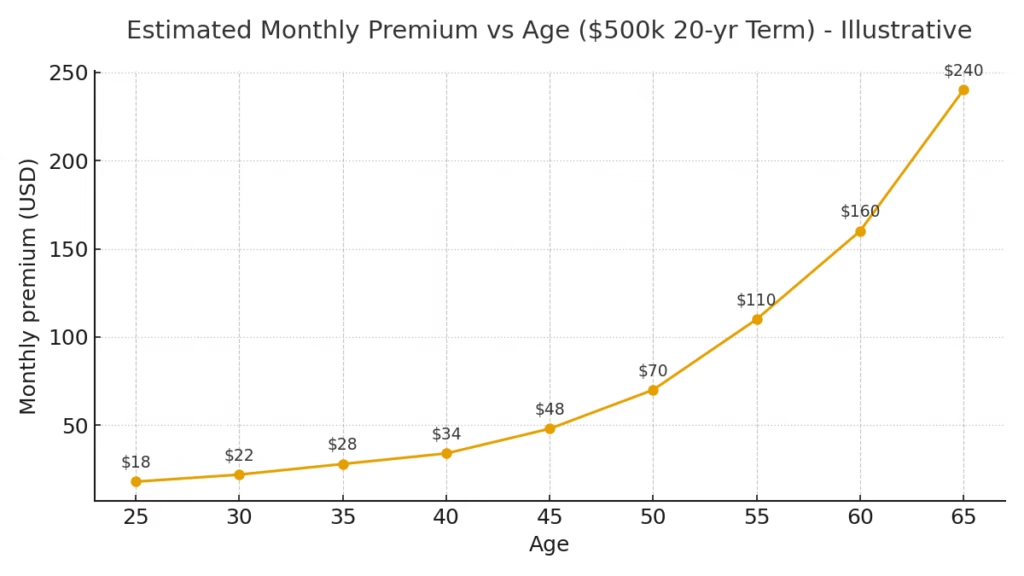
If you are planning your long-term savings alongside life insurance, check out our detailed guide on How Much to Save for Retirement in the USA. It will help you plan your coverage and savings together. For an in-depth breakdown of life insurance for freelancers, you can explore NerdWallet’s Life Insurance Comparison Guide. It is a trusted resource used by millions to evaluate coverage options.
Building the Perfect Life Insurance Strategy for Freelancers in 2026
Now that you understand the different insurance options for freelancers and how affordable life insurance for freelancers can actually be, it is time to create a strategy that truly works for you. The key to success here is not to buy the most expensive plan, but the most relevant one that fits your income, lifestyle, and future goals.
Let us dive deeper into how freelancers in the US, UK, Canada, Singapore, and Australia can practically structure their coverage plan for 2026 and beyond.
Step 1: Understand Your Freelance Cash Flow
As a freelancer, your income probably fluctuates month to month. You may have one month earning $8,000 and another month with only $2,000. Life insurance should never burden you during lean months. That is why flexible and affordable life insurance for freelancers is crucial.
The smart move is to calculate your average annual income over the past year, then take 10 to 15 percent of that number as your insurance premium budget.
For example:
If you made $60,000 in 2025, your annual insurance contribution should not exceed $9,000. Divide that by 12 months, and you can easily afford about $750 per month for a term plan that protects your family for up to $500,000 in coverage.
Step 2: Choose Between Term and Permanent Life
Freelancers often ask, “Should I go for term or whole life insurance?”
Here is a simple breakdown:
- Term Life Insurance: Best for those who want affordable protection for a set period (for example, 20 years).
- Whole Life or Permanent Insurance: Suitable for long-term financial planning and wealth transfer but more expensive.
If you are still in the growth phase of your freelance career, term life insurance is often the most cost-effective. You can always upgrade later once your business stabilizes.
Step 3: Integrate Disability and Income Protection
Freelancers rarely get sick leave or disability benefits. So, it is smart to combine life insurance with income protection.
For instance, if you face a medical emergency that prevents you from working for 3 months, a disability rider in your policy can replace part of your lost income. Many insurance companies now offer hybrid policies where freelancers can customize these riders.
Some popular examples in the US and UK include:
- Haven Life and Ethos for flexible term coverage
- Guardian Life and Legal & General for disability and income protection riders
- Sun Life Canada for affordable coverage tailored for gig workers
Step 4: Optimize for Tax Benefits
Most freelancers do not realize that certain insurance premiums can qualify as tax deductions. In the US, life insurance payouts are typically tax-free, but if you use it within a business structure, some parts of the premium may be deductible.
In Canada and Australia, certain business-linked or superannuation-based life policies can also bring tax benefits.
This is where financial literacy meets strategy. The goal is to protect your loved ones while also reducing your taxable income. Consult with a certified accountant or financial advisor before finalizing your policy.
Step 5: Build Emergency and Investment Layers
Life insurance alone is not enough. Combine it with an emergency fund and long-term investments to stay financially secure.
For example, imagine you are a graphic designer earning freelance income online. You buy a 20-year term plan worth $400,000. You also set aside 3 months’ worth of expenses in a savings account. On top of that, you invest monthly in mutual funds or retirement accounts.
Now, even if something happens to you unexpectedly, your family gets insurance coverage and financial stability from your savings and investments.
This layered approach is what separates financially smart freelancers from those living gig to gig.
Step 6: Reassess Your Coverage Every 2 Years
Freelancers’ lives evolve fast. Today you might be single, but in 3 years you may be married or have kids. Each life event changes your insurance needs.
A good rule of thumb:
Revisit your policy every 2 years or whenever your income changes significantly. This keeps your protection aligned with your lifestyle.
Step 7: Compare International Freelancer Insurance Providers
If you work across borders or earn in multiple currencies, consider international life insurance plans that cover global freelancers.
Some leading platforms include:
- Cigna Global (for expats and international freelancers)
- Allianz Care (for digital nomads)
- AXA Global (for freelancers working remotely for foreign clients)
These plans often allow you to receive payouts or maintain coverage even if you move countries, which is perfect for freelancers in 2026’s increasingly remote world.
Common Mistakes Freelancers Make with Life Insurance
- Waiting Too Long to Buy – The younger you are, the cheaper your premium. Waiting until your 40s can cost 3 times more.
- Ignoring Riders – Income protection, critical illness, and waiver-of-premium riders are worth the extra cost.
- Underinsuring – Many freelancers buy just $100,000 coverage, which is often not enough to support dependents.
- Not Naming a Beneficiary Properly – Always review your beneficiary list every few years.
- Forgetting to Link Insurance to Debt and Taxes – If you have business loans or credit lines, ensure your insurance covers them.
Sarah the Freelance Writer
Sarah, a 34-year-old freelancer from Toronto, decided to secure her financial future in 2025. She purchased a 25-year term life policy worth $500,000 for just $42 per month from Sun Life.
Within a year, she also added a disability rider and set up a small investment SIP for her future. By 2026, she has peace of mind knowing that even if something unexpected happens, her family is protected and her freelance business can continue running smoothly.
This kind of real-life strategy shows that affordable life insurance for freelancers is not a luxury, it is a necessity.
Step 8: How to Buy Life Insurance Online in 2026
The best thing about 2026 is how digital the process has become. Freelancers can now buy, compare, and manage life insurance policies online within minutes.
Here is the process:
- Visit an online insurance aggregator like Policygenius or NerdWallet.
- Enter your details such as age, income, and profession.
- Compare quotes from multiple insurers.
- Read reviews and policy features carefully.
- Choose the plan that fits your needs and apply online.
Some providers even allow instant approval without medical exams for freelancers under 40 with a healthy record.
Step 9: What Happens If You Skip Insurance Altogether?
Many freelancers take the risk of skipping life insurance thinking they can handle emergencies later. But here is the reality, if you pass away unexpectedly, your dependents are left with your business debts, unpaid taxes, or ongoing loans.
Life insurance is not just about covering death; it is about preserving financial continuity for your family. Without it, your years of freelance work can go to waste financially.
Step 10: How to Choose the Best Life Insurance for Freelancers in 2026
To wrap up, here is a 5-step checklist before you buy:
- Calculate your average yearly income and expenses.
- Decide how much coverage you need (typically 10x your income).
- Compare at least 3 to 4 insurers online.
- Add essential riders for income protection and illness coverage.
- Reassess the plan every 2 years.
Final Thoughts
Freelancing gives you freedom, but freedom comes with responsibility. You may not have an employer pension, paid leave, or group insurance benefits, but you have the power to build your own protection system.
In 2026, the best life insurance for freelancers is not about brand names or fancy policies. It is about customization, affordability, and consistency.
So take a moment today to review your coverage. Ask yourself, if something happened tomorrow, would my loved ones be secure?
If the answer is no, it is time to act.
Challenge:
Have you already compared different insurance options for freelancers this year? What surprised you the most about the pricing or flexibility? Share your story in the comments to help others make smarter financial decisions.


